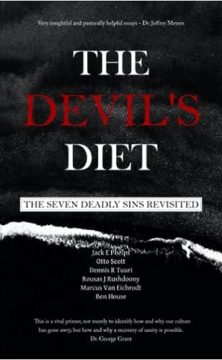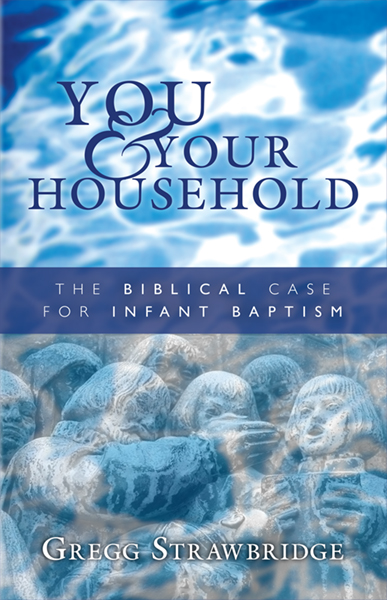by Guest Writer, Joshua Torrey
Note: Here is an introduction to baptism focusing on the role of the Spirit in this sacrament.
The New Testament actually says very little about baptism. Not counting allusions to the practice of baptism, the number shrinks even more dramatically. The lack of any clear exposition on the practice of baptism is even more discouraging. What are we to make the Biblical “instruction about washings” (Heb 6:2) that apparently is an “elementary doctrine?” Simple questions have plagued the church and split its theologians since the beginning. No question though is more important than “what does the word baptism mean?” Well that might seem silly but it is an important question.
Does “baptism” in the New Testament refer to a literal and physical washing with water? Or is it speaking to a type of “baptism of the Holy Spirit” (Acts 1:5)? Do distinctions exist between these two views? And how pertinent are they to one’s theology of baptism? With all great questions the answer is both yes and no. With respect to the existence of distinctions the answer is yes. But there is also a qualified no.
Why the yes then? Well, the answer is yes because John the baptizer makes a clear distinction between these two (Matt 3:11; Mark 1:8; Luke 3:16; John 1:33; Acts 1:5; 11:16). This cannot be argued and the time of John the baptizer through the book of Acts displays the outworking of this distinction. But does this mean that the distinction made so clear by John the Baptizer is taught in the rest of the Scriptures? Asked another way, is John’s baptism the normal working procedure? Or does John’s “baptism of water” stand out among the backdrop of Biblical baptism that unifies water and Spirit?
In an effort to provide a thorough Biblical view on baptism this chapter must provide a qualified “no” to the distinction between water and Spirit found in the baptism of John. It is my opinion that when John’s “baptism of water” is studied and placed in the history of the Scriptures its distinctions between water and Spirit stand out as abnormal. The Scriptures then communicate a theology of baptism that answers “no” to great distinctions. This chapter will argue that no distinction exists between “water baptism” and “Spirit baptism” in the fully developed baptism of the New Testament epistles.
As would be expected, this view will have a significant bearing on our perception and practice of Christian baptism. So we must strive to be convinced by the full breadth of Scripture on this issue. Since “all Scripture is breathed out by God” (2 Timothy 3:16) all Old Testament references to baptism must be forcefully considered and investigated. Subsequently, since the few mentions of baptism in the epistles of the Apostles point to the Old Testament these references, and their constituents, must be evaluated for symbols and typology. In this regard, our evaluation of the Old Testament will have to expand. We must find the interpretation of the Old Testament that allows us to say with Paul that these Scriptures were “written down for our instruction” (1 Cor 10:11). This entails the images and symbols found in the Old Testament be allowed to speak on the issue of baptism when interpreting the New Testament.
This chapter will proceed to look at many, though not all, of the Old Testament texts that should be incorporated to produce a Biblical teaching on baptism. Instead of the traditional word study approach, the historical narratives will present a picture of baptism that shows a holy union between water and Spirit in baptism. Each step in the Old Testament revelation will show that the Apostles carried over covenantal and salvific themes into Christian baptism precisely because of this paradigmatic union of water and Spirit in baptism.
The Creation Baptism
Creation is the event. No matter one’s interpretation of the first chapters in Genesis there is near universal agreement that this event is paradigmatic for the rest of the Scriptures. Thus it isn’t surprising that many Biblical doctrines are related to or contained in these early chapters. Without degrading the historical validity of the Genesis account, all agree that it is full of symbols and images that have reverberations throughout the rest of the Scriptures. Some of these symbols and signs are clearer than others.
John re-writes Genesis 1:1 to introduce the eternal logos (John 1:1). Paul returns to “let there be light” to proclaim the new creation found in the light of Jesus Christ (2 Cor 4:6). Paul even returns us to the garden to see that the church is Christ’s bride: there is a new Adam and a new Eve (Eph 5:31-32). Just because all the symbols are not this clear does not permit ignoring the smaller links. Since the topic of inspection is baptism and the Holy Spirit, it makes sense to highlight some insights from the Holy Spirit’s role in creation,
2 The earth was without form and void, and darkness was over the face of the deep. And the Spirit of God was hovering over the face of the waters. 10 God called the dry land Earth, and the waters that were gathered together he called Seas. And God saw that it was good. – Genesis 1:2, 10
These are epic events. And there are things to be noticed on the surface of the verses. First, the Holy Spirit’s introduction is post-deceleration. Genesis 1:1 has already occurred. God has already created the “in the beginning” and “the heavens and the earth.” It is at some time later that the Holy Spirit is “hovering” (H7363). This Hebrew word can implying both negative and positive emotion (Deut 32:11; Jer 23:9). The imagery in Jeremiah of a hovering/cherishing mother seems most relevant to this text given the birthing of creation that is about to take place.
Second, the Spirit is hovering over the waters. Water and the Holy Spirit are seen together. This point cannot be emphasized enough. Paradigmatically the two are introduced in God’s revelation together. In the effort of forming creation they are obviously distinct. The Holy Spirit remains the Hoverer. And water remains the thing hovered upon. But they are found in relationship together. They remain distinguishable from one another but in relation to each other.
Third is the effect the Holy Spirit has on the water in creation. Though the Holy Spirit disappears from the Biblical text, it seems safe to say that His “hovering” didn’t cease the moment God spoke light into existence (Gen 1:3). The next time these waters are mentioned in the Scriptures, they are brought together to allow dry land to appear. This is the dry land that allows the first examples life in creation to appear (Gen 1:11-13). This imagery in particular is important for all subsequent Old Testament baptisms. Though there will be many Old Testament references that point back to this for the moment we’ll focus on its impact on the New Testament via the baptism of Jesus Christ.
The baptism of Jesus is a re-telling or re-casting of the creation event. There are multiple reasons to be persuaded of this. First, this is the beginning of Christ’s ministry. This is not re-creation in the normal sense but in the declaratory sense. When Jesus hears His Father speak the echoes of creation come to mind. “This is my beloved Son” (Matt 3:17) is not unlike the spoken word of God. Even the minority rendering of Luke 3:22 which reads “This is my beloved Son; today I have begotten You” points to a type of creation decree of the part God. Since the Psalmist records this (Psa 2:7) and the apostles interpret in in multiple ways (Acts 13:33; Heb 1:5; 5:5), it is not a statement of factual creation (the Eternal Son has always existed with the Father). But the Lord’s decree declares something new in creation via the baptism of Jesus Christ.
The second image that tied this baptism to creation is the Holy Spirit descending upon Christ. This event is quite consistent with His hovering over the waters. It is even alluded to in advance by the prophet Isaiah (Isa 11:1). In the Synoptics, the Holy Spirit is portrayed as a dove descending upon Jesus (Matt 3:16; Mark 1:10; Luke 3:22). Though the importance of the dove imagery will be discussed in the next section, it is the abiding of the Spirit that is important. To see how the Holy Spirit is “hovering” the difference in John’s depiction must be analyzed,
32 And John bore witness: “I saw the Spirit descend from heaven like a dove, and it remained on him. 33 I myself did not know him, but he who sent me to baptize with water said to me, ‘He on whom you see the Spirit descend and remain, this is he who baptizes with the Holy Spirit.’ 34 And I have seen and have borne witness that this is the Son of God.” – John 1:32-34
For John the baptizer and John the disciple it is the reality that the Holy Spirit “remains” that proves the authenticity of Jesus Christ. The addition of this concept is important in this context. This Greek word menō (G3306) is paramount to understanding the writings of John. Throughout his gospel and first epistle the word is used at a staggering amount as a sign of true believers and followers of Jesus Christ. Before all of this though, the word is used to validate Jesus Christ. The Holy Spirit remained with Jesus Christ throughout the rest of His ministry. The Holy Spirit directed Christ and drove Him in His ministry. It is this hovering and cherishing of the eternal Son that reminds us of creation. Ultimately it is this same Holy Spirit that will again be present to raise Christ up, this time from the dead (Rom 8:11), and proclaim the conquering of death. This resurrection of the death ties together this second image and the final third image.
Consistent with these images from Genesis, this third and final image ties the baptism of Jesus back to creation even more strongly. It is the appearing of new land suitable for life from out of the midst of the water. This is the reason that Matthew and Mark tell that the Holy Spirit and Father’s declaration as Christ “came up out of the water” (Matt 3:16; Mark 1:9). As shall be seen with other Old Testament texts, this element is perhaps the crucial concept to understanding the apostle’s teaching on baptism. This symbol of new life is particularly valuable to understand the salvation and deliverance in baptism. But for now simple recognition will do that in this baptism, performed by John, the new land/life is Jesus Christ.
This concept might sound awkward at first. The language requires more than one glance. But Jesus Christ is the “new man” that believers are to put on (Eph 4:24). Paul links this “putting on” of the new man to baptism (Gal 3:27)! Jesus Christ is also the “man of heaven” that combats the fall man of the first creation (1 Cor 15:46-49). These statements make sense of Jesus Christ rising out of the water is a faithful re-telling of creation. Jesus Christ in His baptism begins all “new creation” imagery. Christ’s baptism point forward to His death (Mark 10:38-39; Rom 6:1-5). God has begun to make all things new (Rev 21:5). This explains why in the resurrection Paul can speak the way he does about “anyone [who] is in Christ…” (2 Cor 5:17). For when we participate in Him in baptism and death we participate in “new creation.”
Jesus’ baptism under John accomplished this. Or put another way, John’s baptism when accompanied by the Holy Spirit accomplished this. Baptism of water and Spirit as described in Genesis 1 accomplishes this.
Excursion of Luke’s Placement on Baptism
Though the content of this excursion would flow significantly in the midst of the previous section. However the brief focus on the gospel of Luke is presented best on its own. Luke is purposeful in his placement of Jesus’ baptism. It all starts in the third chapter of his gospel. A historical setting is given for Jesus Christ to enter into. Like the Old Testament prophets before Him, the word of the Lord is about to come to Jesus Christ. It is after the full number of baptisms (more on this in the next section) that Jesus Christ presents Himself for baptism. There is a proclamation from God and the descent of the dove. And then Luke places his genealogy.
This would seem an awkward place to put the genealogy. Matthew’s genealogy begins his gospel (Matt 1). This was much like the start of 1 Chronicles. But Luke includes his after baptism. Matthew’s genealogy only goes to Abraham (Matt 1:2). Luke’s goes all the way back to Adam and God (Luke 3:38). Luke’s placement of baptism and genealogy points to the creation of Genesis 1 and the genealogy in Genesis 2:4. Luke’s decision intentionally links Jesus Christ’s baptism to the original creation.
Along with this, Luke remarks in passing that Jesus was around thirty years old. This age is historically significant. It links to the beginning of Joseph’s service to Pharaoh (Gen 41:46), the starting age of the priests (Num 4) and the age David became king (2 Sam 5:4). Something new is starting in the ministry of Jesus Christ. For Luke that ministry is related to the genealogy of creation. It stretches back to Adam and God. Jesus is beginning to be the new Adam reigning and serving before God. Paul’s theology of the second Adam seems to have controlled much of Luke thinking in this regard. And for Luke, the event that begins all of this is Christian baptism.
Joshua Torrey blogs here.<>


























